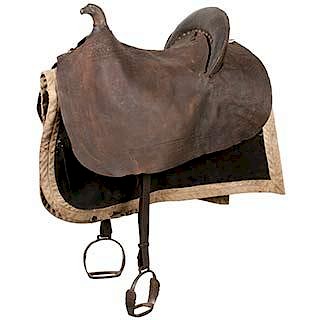Model 1867 Springfield U.S. Navy Carbine
About Seller
6270 Este Ave.
Cincinnati , OH 45232
United States
With offices in Cincinnati, Cleveland and Denver, Cowan’s holds over 40 auctions each year, with annual sales exceeding $16M. We reach buyers around the globe, and take pride in our reputation for integrity, customer service and great results. A full-service house, Cowan’s Auctions specializes in Am...Read more
Two ways to bid:
- Leave a max absentee bid and the platform will bid on your behalf up to your maximum bid during the live auction.
- Bid live during the auction and your bids will be submitted real-time to the auctioneer.
Bid Increments
| Price | Bid Increment |
|---|---|
| $0 | $25 |
| $500 | $50 |
| $1,000 | $100 |
| $2,000 | $250 |
| $5,000 | $500 |
| $10,000 | $1,000 |
| $20,000 | $2,500 |
| $50,000 | $5,000 |
| $100,000 | $10,000 |
About Auction
Nov 1, 2017 - Nov 3, 2017
Cowan's Auctions dawnie@cowans.com
- Lot Description
.50-45, 23.25" barrel, S/N 2209. Blued and nickel finish, walnut buttstock and 9.375" forend secured by a single barrel band. Standard two-line Remington patent markings on receiver tang. Right side of receiver clearly marked with a spread-winged eagle over U.S.N. / SPRINGFIELD / 1870. Top of barrel marked at breech with naval anchor inspection mark, and with the serial number 2209 on the left flat, near the receiver. A clear FCW (Frank C. Warner) script cartouche is present on the right side of the forend, forward of the receiver. L-shaped leaf rear sight, blade front sight. Sling swivels on front bow of triggerguard and on bottom of barrel band.
Between 1868-1869, some 5,095 M-1867 Navy Rolling Block Carbines were produced by Remington, with 5,000 being delivered to the US Navy, and the other 95 sold commercially. After brief service, many of these guns were withdrawn and modified, some re-chambered to other calibers (the State of South Carolina acquired 200 re-chambered to .45-70), and others altered to new configurations, including rifles. This carbine appears to be one such alteration, likely performed at Springfield Armory for trials at sea. The gun retains the original Navy carbine barrel of unaltered length and remains in the original .50-45 chambering, with the usual Springfield 3-groove bore. The barrel has been mated with a USN marked Model 1870 Naval Rifle receiver, which has been nickel plated. The plating appears completely period and correct and does not appear to have been applied in modern times. From the early 19th century the US Navy had experimented with various finishes to protect their small arms from the caustic sea air. Bluing, browning, tinning and even leather coverings were all tried with various degrees of success. It appears that this carbine was intended for trials to assess the viability of nickel as a protective finish on naval small arms. The triggerguard and buttplate are nickel plated as well. While it could be argued that this was done by a retailer like Schuyler, Hartley and Graham when the gun was sold as surplus, the presence of a clear and correct Frank C. Warner inspection cartouche on the forend suggests otherwise. Navy carbines were not normally inspected in this location, and this mark suggests the gun was inspected in its current configuration after the addition of the navy rifle receiver. It is the opinion of this cataloger that the gun is correct in every way and is worthy of further research to determine exactly when and why a small number of the naval carbines were assembled in this configuration.
Very Good. Retains strong blue on the barrel with some fading, loss and minor surface oxidation. Nickel receiver retains much of the original plating. All markings remain sharp and crisp. Mechanically functional, very good bore. Stock with expected bumps and dings from service and use.Condition
Eliminate the Hassle of Third-Party Shippers: Let Cowan's Ship Directly To You!
If you'd like a shipping estimate before the auction, contact Cowan's in-house shipping department at shipping@cowans.com or 513.871.1670 x219. - Shipping Info
-
Eliminate the Hassle of Third-Party Shippers: Let Cowan's Ship Directly To You!
If you'd like a shipping estimate before the auction, contact Cowan's in-house shipping department at shipping@cowans.com or 513.871.1670 x219.
At the request of the buyer, Cowan's will authorize the shipment of purchased items. Shipments usually occur within two weeks after payment has been received. Shipment is generally made via UPS Ground service. Unless buyer gives special instructions, the shipping method shall be at the sole discretion of Cowan's Auctions, Inc.. Cowan's is in no way responsible for the acts or omissions of independent handlers, packers or shippers of purchased items or for any loss, damage or delay from the packing or shipping of any property.
-
- Buyer's Premium



 EUR
EUR CAD
CAD AUD
AUD GBP
GBP MXN
MXN HKD
HKD CNY
CNY MYR
MYR SEK
SEK SGD
SGD CHF
CHF THB
THB

















